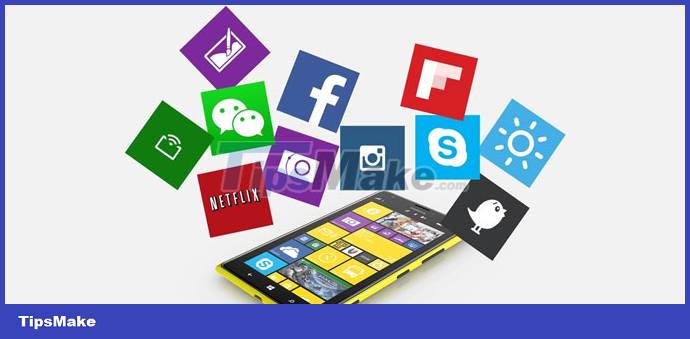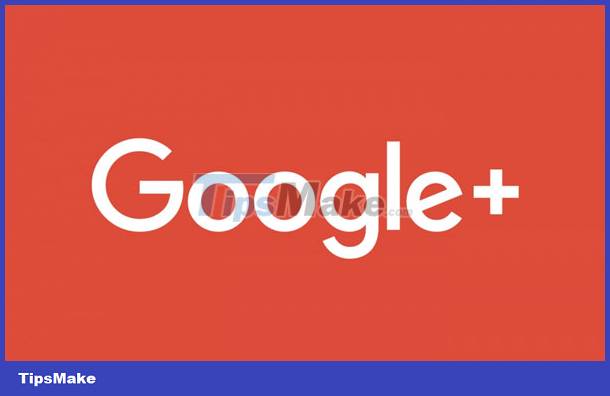8 wrong decisions in the history of the technology industry
1. Nokia chose Windows Phone instead of Android
Nokia was once the world's largest mobile phone manufacturer, but by the early 2010s it had lost most of its market share to iPhone and Android.

At that time, Nokia CEO Stephen Elop did not choose the Android platform for development because he thought the company would not be able to differentiate itself in technology from other manufacturers. He decided to cooperate with Microsoft to produce smartphones running the Windows Phone operating system.
At that time, Nokia Lumia devices actually had very good hardware but could not compete with Samsung because they were held back by Windows Phone.
2. Blockbuster turned down the opportunity to buy Netflix
In September 2000, Netflix co-founders Reed Hastings and Marc Randolph met with Blockbuster CEO John Antioco with a proposal to sell the online video service to Blockbuster. Unfortunately, Blockbuster did not reciprocate that sentiment.
Previously, Netflix rejected an offer to buy Amazon, saying Blockbuster would be a good fit.
3. Microsoft releases Chatbot trained by the Internet

In 2016, Microsoft launched an Internet-trained chatbot called "Tay". But less than a day after launch, Microsoft removed Tay because these chatbots made silly mistakes.
4. Apple redesigned the MacBook keyboard
In 2015, Apple introduced a new keyboard design that is thinner, quieter and more responsive than traditional keyboards, called the 'butterfly keyboard' for MacBooks.
However, this new keyboard has some errors such as sticky keys, unresponsiveness.
At that time, Apple issued an apology and free repairs but did not admit any design errors.
5. Google tries to create hype with Google+ invites

In 2011, the social networking platform Google+ was launched to compete with Facebook and Twitter. At that time, only users who receive the invitation can use it.
Google+ has hundreds of millions of accounts but has never had more active users than Twitter.
The company has released multiple updates and redesigns to improve Google+ without success. Finally, in 2019, Google had to shut down the platform after a series of scandals related to data breaches.
6. Amazon invests in phones
Amazon has (and still does) have a lot of success with its Kindle e-readers and Fire tablets.
In 2014, Amazon decided to venture into the smartphone market with the Amazon Fire Phone product, launched exclusively on AT&T.
The Fire Phone has some unique features but poor design quality and low specs. Therefore, the product quickly became estranged and finally, after less than a year of launch, Amazon had to temporarily stop phone production.
7. Silicon Valley 'fell in love' with Quibi
Quibi is a short-form streaming platform launched in April 2020 founded by Jeffrey Katzenberg and Meg Whitman. The platform has raised $1.75 billion from Silicon Valley investors. Quibi targets young users.
However, in less than a year, it quickly collapsed in December 2020.
8. HP creates WebOS chaos
In April 2010, HP spent $1.2 billion to acquire Palm and WebOS. HP wants to use WebOS on everything from smartphones to printers. But what happened was contrary to expectations, so in 2013 HP sold WebOS to LG for use on smart TVs.
You should read it
- 8 key factors to consider when testing AI chatbot accuracy
- Microsoft started to remove the Nokia name from the apps
- The Microsoft brand will appear on new Nokia devices
- Is ChatGPT, Microsoft Bing AI or Google Bard the best AI chatbot?
- Chatbot Microsoft Copilot claims to be the master, calling users slaves
- Review Nokia 1.4: Large 6.5 inch screen, 2 day battery, cheap price
- The 34 best and worst phones in Nokia's calendar, which one is your spring?
- Nokia developed audio charging technology
May be interested
- The pioneering software of Vietnamese technology industry
 born in the context of the country's information technology industry is in a preliminary stage of development, software such as unikey, bked, d32 antivirus ... has played an important role in changing the lives of vietnamese people at that time. .
born in the context of the country's information technology industry is in a preliminary stage of development, software such as unikey, bked, d32 antivirus ... has played an important role in changing the lives of vietnamese people at that time. . - Summary of the hottest technology news in the 3rd week of September
 the skills of it workers should know, fix laptop errors should not be in sleep mode, the unknown things about iphone 6 camera, short google saved the location history on ios and android, the simple way of protecting data data and accounts, the differences between ios 8 and ios 7, ... are the most interesting tips of the week.
the skills of it workers should know, fix laptop errors should not be in sleep mode, the unknown things about iphone 6 camera, short google saved the location history on ios and android, the simple way of protecting data data and accounts, the differences between ios 8 and ios 7, ... are the most interesting tips of the week. - 26 important days in computing history
 the way the computer industry has become modern is not simple today. it includes many milestones marking many different stages of development.
the way the computer industry has become modern is not simple today. it includes many milestones marking many different stages of development. - Summary of the hottest technology news in September 2
 notable features on iphone 6, time to order iphone 6, iphone 6 predictions, instructions on how to delete youtube search history ensure privacy, quick shortcuts for coc coc, optimize the time battery for laptop running windows 8.1, ... is the most interesting news last week.
notable features on iphone 6, time to order iphone 6, iphone 6 predictions, instructions on how to delete youtube search history ensure privacy, quick shortcuts for coc coc, optimize the time battery for laptop running windows 8.1, ... is the most interesting news last week. - How to use the history command in Linux
 as you spend more and more time in terminal sessions, you will constantly find new commands that make everyday tasks more efficient. the gnu history command is one of them.
as you spend more and more time in terminal sessions, you will constantly find new commands that make everyday tasks more efficient. the gnu history command is one of them. - How the Chinese chip industry survived during the corona virus crisis
 as both wuhan and hubei city were blocked by the corona virus outbreak, the yangtze memory factory - representing the voice of the chinese chip industry - still received special favors to operate.
as both wuhan and hubei city were blocked by the corona virus outbreak, the yangtze memory factory - representing the voice of the chinese chip industry - still received special favors to operate. - Microsoft CEO: Women should not ask for a raise
 microsoft ceo satya nadella told many female audience in the technology industry that women should not ask for a raise.
microsoft ceo satya nadella told many female audience in the technology industry that women should not ask for a raise. - How to Delete Your Usage History Tracks in Windows
 this wikihow teaches you how to clear the app usage history, file explorer history, search history, and internet browsing history on a windows computer. right-click the taskbar. the taskbar is the bar at the bottom of the screen. doing so...
this wikihow teaches you how to clear the app usage history, file explorer history, search history, and internet browsing history on a windows computer. right-click the taskbar. the taskbar is the bar at the bottom of the screen. doing so... - 3 Extensions that support managing browsing history in Chrome
 if you're a regular user of google chrome, you may notice that chrome's browsing history feature has a lot of issues to improve.
if you're a regular user of google chrome, you may notice that chrome's browsing history feature has a lot of issues to improve. - What is NPU?
 with npus supporting on-device ai technology across soc (system on chip) designs used in laptops, smartphones, and single-board pcs, it is important to understand and compare specifications. their techniques to optimize performance and make informed purchasing decisions.
with npus supporting on-device ai technology across soc (system on chip) designs used in laptops, smartphones, and single-board pcs, it is important to understand and compare specifications. their techniques to optimize performance and make informed purchasing decisions.










 The Windows 1.0 operating system is 40 years old
The Windows 1.0 operating system is 40 years old Microsoft launches the .NET 8 developer platform with .NET Aspire
Microsoft launches the .NET 8 developer platform with .NET Aspire Warning: Do not download the Google Bard app! It's malware!
Warning: Do not download the Google Bard app! It's malware! How to use AI Image Editor to edit photos with AI
How to use AI Image Editor to edit photos with AI The 12-inch screen can stretch like a piece of LG rubber
The 12-inch screen can stretch like a piece of LG rubber Difference between Flutter and Java
Difference between Flutter and Java